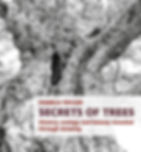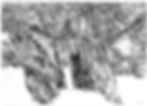Secrets of Trees by Pamela Taylor
- ABA
- Jul 30
- 4 min read
For those interested in accurately depicting and gaining deeper insight into the stature and ecological significance of tree species, Dr Pamela Taylor’s 'Secrets of Trees: History, ecology and botany revealed through drawing' provides a fascinating and informative resource.
Article by:
Sarah Gardner, botanical artist, ABA Committee and Education Team member.

Pamela Taylor develops a strong connection with each tree she draws, gaining insight into their ecology and history through her research. Many tree species live for centuries or even millennia, leading us to see them as relatively static elements of our environment. Her evocative writing provides readers with a window into an alternative perspective.
In Secrets of Trees, Pamela clearly explains the geographical and temporal roots of terms like native, non-native, and archaeophyte, and takes us through a tree’s lifespan from sapling to staghorn, making these stages straightforward to recognise whilst introducing the stories behind the trees she has illustrated and habitats she has studied over the years. Her illustrations in ink throughout the book are beautifully rendered and minutely detailed.

A useful resource for the botanical artist, this book offers tips and techniques in the ‘Trade Secrets’ sections for those who are contemplating making full tree portraits or adding a small tree portrait to their botanical illustrations. I particularly liked Pamela’s tip to bring a photocopy of your partially completed illustration with you when returning to a tree during the drawing process so that you can make additional notes and clarify any confusion over the positioning of branches.

She also offers insights into depicting groupings of leaves at different heights and angles within the crown of the tree, discusses various ways to capture bark textures and how to show branches in silhouette and using negative drawing to give an indication of depth.
Whilst all the trees illustrated in this book are located in the United Kingdom, several are non-native and the secrets to drawing shared by Pamela could be applied to rendering any tree species anywhere, making it just as inspiring for artists from other countries.
In her chapter on English oaks, Pamela takes us on a vivid journey from the moment a tiny sapling’s roots develop connections to mycorrhizae (their support team of symbiotic fungi) through to maturity. This merely covers the first few hundred years! She then moves on to the oak’s middle-age which continues for the next 300 years as the tree gradually earns the mantle of veteran. From then she describes its gradual ascension toward ancient status over perhaps its final 300 years of life, increasingly bearing the scars inflicted by time, altering its character completely. Even after death, the oak may persist within the landscapes as a memorial to its former life, a home to many creatures and a gradually recycled resource.

I would love to convey more of Pamela’s stories of ancient yews surviving from as far back as the Bronze Age, willow trees that walk, and the hope she offers for the plight of ash trees succumbing to ash die-back, but I must allow you the pleasure of discovering these for yourself in Secrets of Trees.
Author Biography
Dr Pam Taylor is a botanist, botanical artist and ABA Committee and Education Team member.
As a child, Pamela loved drawing and was fascinated by nature, especially the beauty and
colours of flowers. This led her to read Botany at Southampton University and then she
went on to complete a PhD in Plant Ecology at Cambridge University.
She enjoys sharing her knowledge of the natural world and, over the years, she has written
articles about nature for local newspapers and national magazines, illustrated with her
pen-and-ink sketches. In 2008 she completed a short masterclass course with Annie Farrar
at Kew Gardens and has since specialised as a botanical artist, in particular depicting trees
in pen and ink.
There are many beautiful trees wherever you are, but living in south Buckinghamshire
means that Burnham Beeches and Windsor Great Park, with their wealth of ancient trees,
are nearby and a wonderful source of inspiration. Pamela loves getting to know her
subjects as she illustrates them and finds that observation and the accurate portrayal of
her specimens marries science and art.
Pamela is a fellow of the Society of Botanical Artists, a founder member of the Association
of Botanical Artists and a fellow of the Linnean Society. In 2022 she was awarded a silver-gilt medal at the RHS Botanical Art and Photography Show at the Saatchi Gallery in London.
She has work in the Hunt Institute for Botanical Documentation in Pittsburgh, USA.
Where to purchase:
Secrets of Trees: History ecology and botany revealed through drawing is published by Two Rivers Press and is available widely online and in bookshops.
